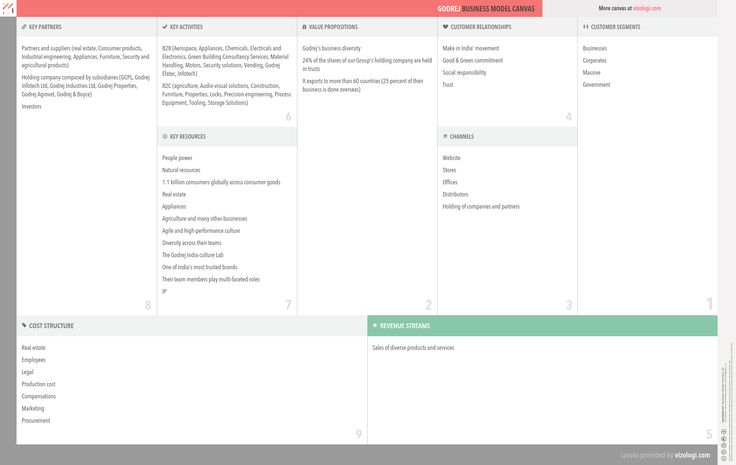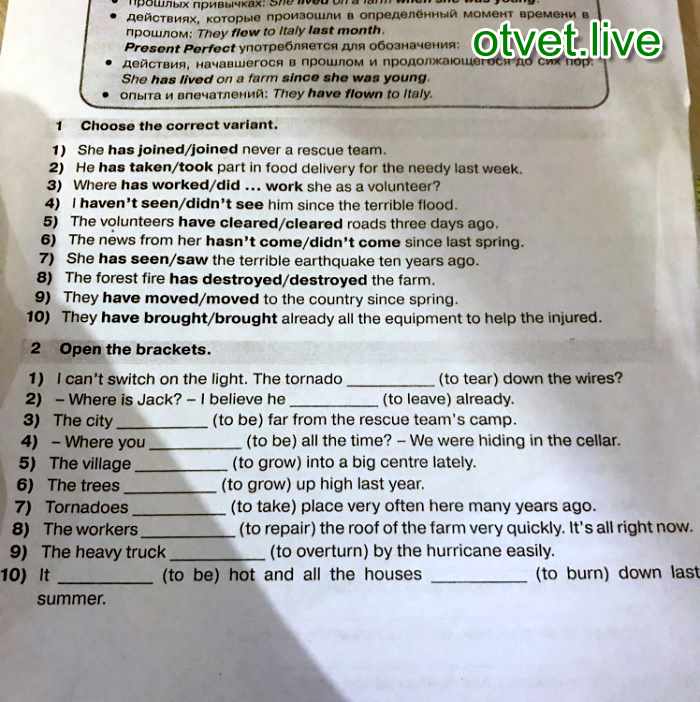Once you’ve mastered the basics of off-roading, you might be eager for greater thrills. Whether you want to compete in off-road races or just want to have fun, one way to get your adrenaline pumping more is to alter your four-wheeler or side-by-side for maximum RPM. You could go to a mechanic, but there are ways to dial up your off-road vehicle yourself, helping you save money in the process. If you’re ready to take your off-road riding to the next level, ATV Trader has six ways to customize your ATV or UTV to go faster.
1. Install a Big Bore KitA big bore kit is one of the most efficient ways of enhancing the horsepower and torque of any off-road vehicle from home. These kits typically include a cylinder, piston, rings, pin, clips, and gasket to fit your ATV or UTV’s engine. The larger cylinder and piston in a big bore kit provide the engine with more power, while also increasing compression.
Big bore kits can be purchased online and are fairly easy for a new owner to install on their own by following the kit’s instructions. You’ll experience an immediate boost in your off-road riding after installing a big bore kit, so it’s a good idea to test out your upgrade in a safe riding area.
Upgrading your ATV or UTV’s exhaust can mean an expensive trip to the mechanic. Adding a slip-on exhaust is a cost-effective way to increase your four-wheeler or side-by-side’s power and help reduce weight by allowing more air to leave the engine.
This simple installation can often be completed by bolting the combined muffler and tailpipe to your vehicle’s existing mid-pipe. Check out this video for a quick tutorial on how to install a slip-on exhaust.
3. Adjust the Speed LimiterMost ATVs and UTVs are equipped with a speed limiter, also known as a governor, that caps the amount of gas that goes to your engine while you’re riding.
To take your four-wheeler or side-by-side to the max, turn the screw on the speed limiter that’s located near the thumb throttle. You can either loosen it to extend the screw or completely remove it to achieve the highest RPM. Check out this helpful video that shows how a speed limiter works, along with a tutorial on how to remove it to get more speed out of your unit.
You can either loosen it to extend the screw or completely remove it to achieve the highest RPM. Check out this helpful video that shows how a speed limiter works, along with a tutorial on how to remove it to get more speed out of your unit.
We recommend adjusting your speed limiter gradually so you can get a feel for how your quad rides with the increased RPMs.
4. Upgrade Your FuelMany four-wheelers and side-by-sides guzzle regular 87-grade gasoline, which is the manufacturer’s minimum octane recommendation. However, using a higher octane fuel can help increase the performance of your engine. This is especially important if you’ve made any modifications to your off-roader’s engine that require increased compression.
Some ATV and UTV models, such as the Polaris RZR Turbo, require a minimum of 91 octane fuel for maximum performance for the four-stroke, turbocharged engine. While higher octane fuel can be more expensive, it will be more than worth it when you’re going full throttle on the trails.
You can find the fuel recommendations for your specific unit in your vehicle’s owner’s manual.
5. Check the Air FilterChecking your ATV or UTV’s air filter should be a regular part of your pre-ride inspection. A dirty or clogged filter makes it harder for air to pass through. The cleaner your air filter, the more horsepower your off-roader is able to produce. Some quad racers will even upgrade their air filters to high-flow filters that boost performance.
6. Change the Gear RatioThe gear ratio refers to the amount of times your ATV or UTV’s front sprocket will rotate per every complete revolution the rear sprocket makes. If you change the gear ratio, you’ll have to decide if you want more acceleration or more top speed. Off-road riders often talk about two situations: gearing up and gearing down.

Experts recommend changing the gear sprockets gradually and not removing more than one to four teeth at a time from the rear sprocket, as well as one tooth at a time from the front.
When you’re ready to start tinkering with your off-road vehicle, grab a few tools and get to your garage. With just a few adjustments, you could be maximizing the output of your ATV or UTV and reaching top speeds.
Note: Be sure to follow all manufacturer guidelines, owner’s manuals, and directions for these products before, during, and after making changes to your vehicle. In order to avoid overpowering your vehicle, only add one customization at a time. When adding customizations, we recommend having any upgrades or changes performed by a professional mechanic. If you perform any upgrades or changes yourself, have them inspected by a mechanic before use. When using your vehicle after customizing, use extreme caution and wear full protective gear. If your unit is under a factory warranty, be aware that these alterations will likely void that warranty.
When using your vehicle after customizing, use extreme caution and wear full protective gear. If your unit is under a factory warranty, be aware that these alterations will likely void that warranty.
If you have a need for speed and are ready to feel the rush of a new or used ATV or UTV, browse the nationwide inventory on ATVTrader.com.
If you’re looking for ways to make your quad go faster, this is where you want to be. I will show you the most common ways riders make their ATVs faster, I’ll also offer some helpful tips along the way.
With more horsepower and torque, you will notice better acceleration and a higher top speed from your quad. But with the engine working harder, are these upgrades safe for your ATV?
But with the engine working harder, are these upgrades safe for your ATV?
Yes, they are. Anytime you ride your quad faster or harder than normal you are increasing the wear and tear that happens over time. You can limit these effects by performing routine maintenance though.
Be careful if you have factory warranty though. Many alterations will void a warranty, so first check to make sure if you don’t want your warranty to voided. If you do have a warranty, and want to keep it, it may be best to just not modify the machine at all until the warranty has expired.
Overall, these upgrades are considered safe and many riders have been making these changes to their quad for years and years. Lets start by looking at the easiest and cheapest ways to make your ATV faster.
A quick and easy change you can make, is to start using higher octane fuel. A lot of quads don’t require that you use higher octane fuel from the manufacturer, but it can help increase the performance of your engine.
If you can, don’t use ethanol based fuels and opt for the higher octane. It will cost a few more bucks than the cheap fuel, but you’ll certainly notice the difference when you hammer on the throttle.
Higher octane fuel burns cleaner, giving you better gas mileage and less corrosion to the mechanical parts of your fuel system. Sure the better mileage isn’t really noticeable in a quad, but the performance differences are there.
Some riders want even more of a boost than the fuel sold at a gas station, so they will add more octane to their fuel themselves. Here is a link to Boostane Professional Octane Booster on Amazon. This is one of the most popular and widely used octane boosters out there, but really any octane booster will work.
You can just add a little bit to the gas in your quad and mix it up a bit by rocking back and forth on the machine. I like to pre-mix it in a gas can before putting it in the gas tank, that way I can get the measurements exactly right.
You should be checking your air filter regularly and cleaning it when necessary. If the air filter starts getting clogged up, it will affect the amount of air the engine can use to run. Riding with a clogged air filter is almost like choking your engine. Check out this article on How To Properly Clean An ATV Air Filter if you need a guide.
A lot of riders will also upgrade their air filter to a lifetime replacement air filter like this K&N Replacement Air Filter on Amazon. Just make sure you type in your make and model and get the right one for your machine.
The increased air flow these filters allow will let your engine receive more air. More air fuel mixture means more power. This is one of the easiest ways to get more performance out of your machine.
On most ATVs, if you look on the right side of your handle bars where your throttle is, you’ll see a governor. On the governor, there will be a screw sticking out, that’s your throttle limiter. The throttle limiter will limit the amount of gas you can give your engine while riding.
The throttle limiter will limit the amount of gas you can give your engine while riding.
Make sure the screw is turned all the way out, if you want to be able to give max throttle. To adjust this, simply loosen the lock-nut holding the throttle limiter screw in place, adjust the screw, and tighten the lock-nut back down.
A lot of people will screw the throttle limiter in if they have children that might be able to ride the machine. Double check the throttle limiter screw to make sure you’re getting the max your engine will allow.
Of course tire pressure will play a role depending on the type of terrain you’re riding in. When riding in sand or snow, a lower tire pressure will make you faster, but on flat hard surfaces, a higher tire pressure would help more.
I would suggest riding at around 5 psi as a good all around number. But to find an exact tire pressure for you and your terrain, check out my ATV Tire Pressure article where I go into a lot more detail about tire pressure and terrain differences.
As far as tire weight goes, you’ll really be looking at changing out the wheels to help with that. I mean sure, don’t expect big heavy mud tires to make your quad go faster, but really the biggest issue I see here is people with steel wheels.
You’ll want to get yourself some light weight aluminum wheels if you want to make your quad faster. A nice set of performance tires won’t hurt either. Tire size might make a difference too, depending on what you’re going for.
Check out these All Terrain ATV UTV Tires made by SunF here on Amazon if you’re in the market for tires. Make sure to get the right tire size for your ATV and your rims.
If you want faster acceleration, go with a smaller tire. If you want more top speed, go with a larger tire. Tire size is very similar to changing out your sprocket for gearing. A larger tire will take more power to turn it, but will cover more ground per revolution. I usually don’t change the tire size unless I am trying to Increase My ATV Ground Clearance.
Adding a nitrous kit to your ATV can give you a good boost of speed when you really need it. They aren’t really all that hard to install or use either. Sure every machine is different, and you’ll want to get a setup you feel safe with. But a lot of people have getting some extra speed this way.
There are a few different types of nitrous setups you could go with, for example, wet or dry. To learn more about nitrous check out my How And Why To Use Nitrous On An ATV article. In that article I walk you through the process so you can decide if it’s right for you.
Upgrading the exhaust on your ATV can get expensive and require some work. But it’s a sure fire way to increase the performance of your quad. With more air being able to leave the engine, it can pull more air in. This setup is great to do in parallel with a high flow air intake system.
If you can’t afford to do the entire exhaust system from the headers on down, you could always get a performance slip-on exhaust. This won’t increase horsepower as much as an entire performance exhaust system will, but it will give you a bit more horsepower.
This won’t increase horsepower as much as an entire performance exhaust system will, but it will give you a bit more horsepower.
Here’s an example Performance Exhaust System For A Honda TRX 300EX to give you an idea of what you’ll need. You are looking for a kit that has the exhaust parts coming from the engine all the way to the muffler and exhaust tip.
Usually the performance exhaust systems will be a bigger diameter than stock, or will be cone shaped to increase in diameter slowly. This allows more airflow through the engine. With more air fuel mixture, you will feel more power and speed when riding.
To change the gear ratio you would need to buy a new front or rear sprocket and replace your existing one. A lot of riders do what is called ‘gearing down’ which is when you get a larger rear sprocket to increase acceleration. This will cause your top speed to drop though. To learn more about gear ratio and how to adjust yours, check out my Complete Gear Ratio Guide.
To ‘gear up’ you would get a smaller rear sprocket which will increase your top speed but decrease your acceleration. You can find most sprocket sizes front and back online now for a pretty good price.
The thing you have to decide is, do you want an acceleration increase or a top speed increase. I don’t typically mess with the gearing of my quads, but I have for particular ATVs that I only ride through trails and never reach top speed. In those cases, gearing down makes sense to give you a quicker jump from the start.
If you decide you want to change a sprocket to adjust your gear ratio. I wrote an article with step by step instructions for you, showing you exactly How To Change The Chain And Sprockets On An ATV.
Installing a big bore kit can be a lot of work, but will give you a huge boost in performance. Acceleration will be quicker and top speed will increase as well. You’re basically upping the cc of your engine.
With most big bore kits, you will be replacing the piston and the cylinder with a larger size. This allows for more air fuel mixture to enter the combustion chamber resulting a huge performance boost to your quad.
Here’s an example Big Bore Kit For A Honda TRX 400EX on Amazon to give you an example of what you’re getting yourself into. You will most likely get all the piston rings and gaskets needed to do the swap with any decent kit.
There you have it, the most common ATV upgrades to increase performance and get some more speed out of your machine. If you’re looking for the cheapest and easiest way to increase performance, I would suggest checking your limiter screw, upgrade to a K&N air filter, use octane booster, and get a slip-on performance exhaust.
Even though you could make all these adjustments to your quad, a lot of riding faster has to do with skill. When you’re racing on track, being able to brake and corner properly is a big deciding factor in most races. Check out my How To Corner On An ATV and How To Brake Properly On An ATV articles to get some tricks and tips on how to ride better.
Check out my How To Corner On An ATV and How To Brake Properly On An ATV articles to get some tricks and tips on how to ride better.
As always, wear proper safety gear when riding, especially if you’re modifying your quad for speed. To check out some safety and riding gear that I’ve tried and tested for you, visit the Recommended Gear section of this site.
Sharing is caring!
ATV can always be improved a little. ATV modifications are available to anyone who knows how to work with their hands at least a little.
This article is for beginners. (By the way, this is my 100th article on or related to ATVs.) According to your owner's manual, your CFMOTO is designed to wad up to footrest depth. This, of course, is not serious! In reality, you are completely calm, without additional preparation, you can dive on the headlights. The air intakes are located just above this zone, so nothing needs to be modified. The only exception is the variator air ducts.
The air intakes are located just above this zone, so nothing needs to be modified. The only exception is the variator air ducts.
Continue reading →
As I've written many times before, the CFMOTO CF500-A's 500cc engine is not overpowered, making it difficult to use the quad in tough conditions like swamps or deep wet snow. It is clear that it is unrealistic to increase the power of the engine itself without alterations, but it is possible to “raise” the power in the transmission section. And this is done with the help of a small tuning - replacing the weights of the variator.
Read more →
So, now it's the end of September, it's quite cold outside, and although you can still ride with gloves, it's already at the limit of endurance. Soon it will get completely cold, your hands will freeze over after 5 minutes of the trip. Therefore, I finally got to the installation of heated handles, which were bought at the end of last winter.
Continue reading →
I've had a handful of LED bulbs for a long time, but I still couldn't figure out where to put them. And I accidentally remembered that you can replace the dashboard lights with LEDs. The replacement job seemed to be very simple.
And I accidentally remembered that you can replace the dashboard lights with LEDs. The replacement job seemed to be very simple.
Continue reading →
As you know, the CF500-A ATVs are equipped with very simple shock absorbers with average performance. Having driven the CF625-X6 once, I felt a difference in comfort, the suspension works noticeably nicer on the X6. I can’t say that everything is bad on the 500 - no, I didn’t complain before, but when you sit on better equipment, you can feel it. I've read ATV forums and read that you can put shocks from an older model (X6) on a 500 and this will add significant comfort.
Continue reading →
In the review of the Deestone Mud Crusher D936 (“devil”) mud tires, I already mentioned that I was very disappointed by the significant imbalance of the wheels, which was expressed in the fact that it was unrealistic to drive at speeds above 60 km / h due to strong steering wheel shake. The steering wheel vibrated so much that it was difficult to hold on to it.
Continue reading →
I came across the topic of installing a damper on an ATV (at an ATV club) a long time ago, but did not immediately understand why this damper (steering shock absorber) was needed. In my understanding, this was associated with some ancient cars, without power steering. But when I understood its essence, I looked at this accessory in a different way. The steering damper absorbs shocks from hitting holes or hitting obstacles, and this is very important for an ATV, because it does not drive on flat roads. Sometimes you can fly in so that the steering wheel will twist your hand, there have even been cases of damage to the wrists. The damper solves these problems perfectly. Therefore, everyone who has installed a damper for themselves is very satisfied: it both protects their hands from impacts and reduces the load.
Read more →
I recently wrote about how I installed an additional light on an ATV. Having driven after that several times in the dark, I was faced with the fact that rear light is simply necessary for maneuvering. Indeed, in the forest there are no sources of light at all, even a dim glow from settlements does not finish. And the moon is not always there, and it is relevant only in the field. At the back of the quadric, only the red envelope is lit, but nothing is visible from it anyway. And what kind of trip on a quad is complete without a reverse gear? Even at the gate upon return it is difficult to enter.
Indeed, in the forest there are no sources of light at all, even a dim glow from settlements does not finish. And the moon is not always there, and it is relevant only in the field. At the back of the quadric, only the red envelope is lit, but nothing is visible from it anyway. And what kind of trip on a quad is complete without a reverse gear? Even at the gate upon return it is difficult to enter.
Continue reading →
The CF500-A has two storage compartments, but they are very small. Even on a scooter, I have a much more capacious trunk. Therefore, only small items can be carried there, but, for example, you cannot put a normal camping shovel there. For a while I drove a shovel using car rubber ties, but this is not very convenient, because you need to make too many actions to fix or remove it.
Continue reading →
With the arrival of cold weather already in November, it became cold to skate, especially on the hands, and especially if it rains. It is worth driving at least a kilometer, the fingers become stiff and begin to prick with needles. It is almost impossible to ride without heated handles, even with gloves.
It is almost impossible to ride without heated handles, even with gloves.
Read more →
1 2 Further →
In order to tip the ATV or fall off it, it is enough to step on the gas inadvertently, for example, on a steep slope or during a sharp turn. Due to the high center of gravity, small width and short wheelbase, the equipment easily stands on 2 wheels. At the same time, a fall, even at low speed, threatens with fractures. Therefore, after buying an ATV, you need to familiarize yourself with the basics of control.
To start an electric start engine, turn the key in the ignition to the ON position, press the brake and press the green electric start button for no longer than 5 seconds.
ATVs usually shift automatically - the shift lever is used to select high, low, neutral or reverse gears, as well as select the parking mode.
To start or increase speed, you need to press the thumb of your right hand on the throttle. The gearbox must be in the “H” or “L” position. The middle finger of the right hand rests on the front brake lever while driving, and the middle and index fingers of the left hand rest on the rear brake lever.
Also on the steering wheel there are buttons for turning on the four-wheel drive and locking the differential. Four-wheel drive will be needed when driving off-road, slippery roads, transporting goods and towing. A differential lock is needed so that the wheels of the ATV spin synchronously - for example, it will help to drive out if one of the wheels is stuck in the mud, and the second remains on a stable surface. When the lock is off, in such a situation, only the wheel that is stuck will spin.
Whether it is possible to turn on the four-wheel drive and blocking on the go and at what speed - should be indicated in the instruction manual. At the same time, regardless of the model of the ATV, the lock cannot be turned on after a jam, since the differential gears must engage without load.
1 - ignition key. 2 - starter button. 3 - light switch. 4 - signal.
1 - throttle lever. 2 - switch 2WD / 4WD. 4 - fuse.
1 - throttle lever. 3 - 4WD / LOCK differential lock switch. 4 - fuse.
Standing up makes it easier to avoid tipping the ATV by shifting your body weight. There are 3 main racks:

The worst stance is when the back is tense, the person leans on his hands, and his legs are straight. In this case, the body does not absorb shocks and shocks, and the bones, intervertebral discs and joints experience a strong load. In addition, control over technique worsens and fatigue increases.
middle rack
A-pillar
rear pillar
To climb, you need to shift into a low gear, take the front stand and drive at medium engine speeds. It is impossible to sharply press the gas when driving up a slope or mountain - there is a risk of rolling over.
When stopping in the middle of a hill, drive off carefully, as a sudden start will be followed by tipping over. If the ATV rolls backwards, you need to press the front brake lever, and after stopping, turn off the engine, put the equipment on the handbrake, turn around manually, slide down and try again.
To descend, you need to take the rear rack and shift into a lower gear. In order not to roll over, brake should be simultaneously front and rear brakes. To avoid skidding, you can not change the trajectory of movement and speed abruptly, as well as brake too hard. It is better not to touch the gas lever when descending.
To drive downhill, shift into low gear and shift your body weight towards the top. Don't hit the gas hard and don't brake hard. You can also fall when making a sharp turn. If the slope is steep and the ground on it is slippery, it is better not to risk it.
To enter a tight turn, lean on the outside footrest and tilt your upper body inward. On slippery surfaces, shifting forward will improve handling, and shifting back will improve the grip of the drive wheels with the road.
Before driving into deep mud, make sure that there are no logs, large stones and other obstacles in it, and the soil is not marshy.